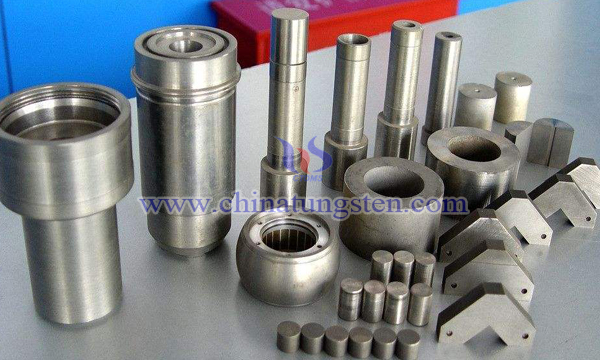New Tungsten Alloy Preparation Technology
- Details
- Category: Tungsten Information
- Published on Wednesday, 17 April 2019 22:33
Tungsten alloys are alloys based on tungsten and composed of other elements. Among the known metals, tungsten has the highest melting point, good high temperature strength, creep resistance, thermal conductivity, electrical conductivity and emission properties. Tungsten has a larger proportion than ordinary metals. In addition to a large number of cemented carbides and alloying additives, tungsten and its alloys are widely used in the electronics and light source industries, as well as in the aerospace, foundry, weapons and other departments to produce rocket nozzles, die-casting dies, armour-piercing core, contacts, heaters and heat shields.

Recently, researchers such as Chen Yixiang and Guo Shibin of the Chinese Academy of Sciences have developed a new process for preparing tungsten alloys. The method is to dry the raw materials of tungsten-based alloys after wet grinding, shape the compacts, and then ignite them in a hypergravity reactor to produce tungsten-based alloys. The preparation includes:
1) Choose the following raw materials
The experimental materials used are: Al powder (purity 99.9%, average particle size 100 micron), W powder (purity 99.9%, average particle size 2.6-5 micron), Fe2O3 (purity 99.99%, average particle size less than 45 micron), NiO (purity 99.99%, average particle size about 20 nanometer); raw materials are prepared according to the W7Ni3;Fe alloy composition (molar ratio W:Ni:Fe=40:7:3).
2) Raw material pretreatment
After wet grinding, the raw materials are dried and compacted to form the reactant body.
3) Reaction
In step 2, the reactant body is loaded into the graphite crucible, the graphite crucible is put into the reactor of the high gravity melting and casting device, and the reaction is initiated by vacuum extraction and ignition under the high gravity condition; the vacuum degree reached after vacuum extraction in the high gravity reactor is less than 200 Pa; the supergravity condition in the high gravity reactor is that the supergravity coefficient is more than 500 G;
4) Post processing
After the reaction is completed in step 3, the graphite crucible is cooled and removed. The product in the crucible is cut off to remove the ceramic layer containing Al2O3. After grinding and polishing, the tungsten alloy product is obtained, which is 40W7Ni3Fe product.
The tungsten-based alloys prepared by the new process have the advantages of fast speed, short reaction time, high efficiency and low cost. The tungsten-based alloys have a series of special properties and can be widely used in energy, metallurgy, electronic information, mechanical processing, aerospace, national defense, military and nuclear industries.
- Tungsten Alloy Manufacturer & Supplier, Chinatungsten Online: www.tungsten-alloy.com
- Tungsten News & Prices of China Tungsten Industry Association: www.ctia.com.cn
- Molybdenum News & Price: news.molybdenum.com.cn
- Tel.: 86 592 5129696; Fax: 86 592 5129797; Email: sales@chinatungsten.com



 sales@chinatungsten.com
sales@chinatungsten.com